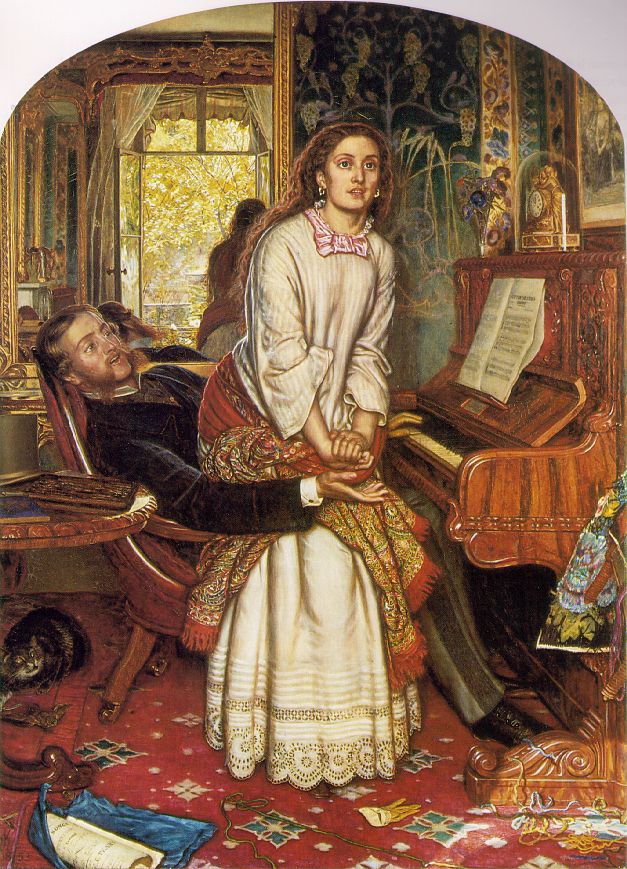Georgian homes were generally more public and showed the wealth and status of the owner. Victorian houses were very different. They were not as open to others and were therefore more modest in their design. In the Victorian period, people were a lot more obsessed with food and storing and not wasting food items. Unlike Georgian bedrooms, Victorian house bedrooms were private and displayed more personal decorations and displays.
There was a wide mix of different visual languages displayed in Victorian homes, and these decorations came from various different eras and cultures. Some styles were revived and became popular again in ornaments and paintings for the home.
In this era, illustrative artist began to be commissioned for books. Illustrators started teaching proper middle class lifestyle through books, and people followed the ideas and visual language of these book. For instance, some books would illustrate and describe what food should look like and how people should properly decorate a table at dinner.
book - Owen Jones
Mrs Beeton

The Victorian home was a haven from the busy and chaotic world of labour in factories. The middle classes used the home as a refuge from the outside where there was danger of disease and war. There were lots of luxuries and comforts in the home, and it was a place to spend the majority of one's spare time.
Women tended to spend more time in the home than men during the Victorian era; women would have been judged on the home, not men as they were in the Georgian era. The Georgian era was mainly about male status in the home.
A Chelsea interior - Robert Tait 1857
Women in the Victorian era had the primary role of wife, mother, and domestic manager. The men were providers and earned money from working during the day. It was the men that climbed social status and the majority of their roles were outside the house. Men generally didn't have much of a role in the home.
The obsession of middle class people with displaying objects and decorations was criticised and linked to weak morals. The Victorian home was seen as a facilitation of self reflection.
The Awakening Conscience - Holman Hunt

Questions morality with displaying material possessions. The woman in the painting appears enlightened; the light in the painting resembles the judgement of God and her awakening. The cat in the painting has a metaphor of male lust and the bird: female vulnerability.
After the first world war in the early 20th century, the notion of the home being all interior faded. A phase of optimism arrived and people believed there would never be another war as devastating. The home expanded to the outside world with gardens appearing, and people were more comfortable with the outside world.
In the 1920s women had a housewife lifestyle and men had even less of a role in the home. By the 1950s, appliances were introduced that made practical tasks around the house easier. Washing machines and cookers made women's roles in the house easier, but also put added pressure on women to keep a clean house. Men were judged on how well their spouses kept their homes.
Television created a larger separation from the outside world, however, it did give people access to the world through news. This brought the issues of the outside world into the home.
By the 1980s women wanted careers, not domestic duties. Women started to gain more freedom and by the 1990s, the home was a place of relaxation for both men and women.
No comments:
Post a Comment